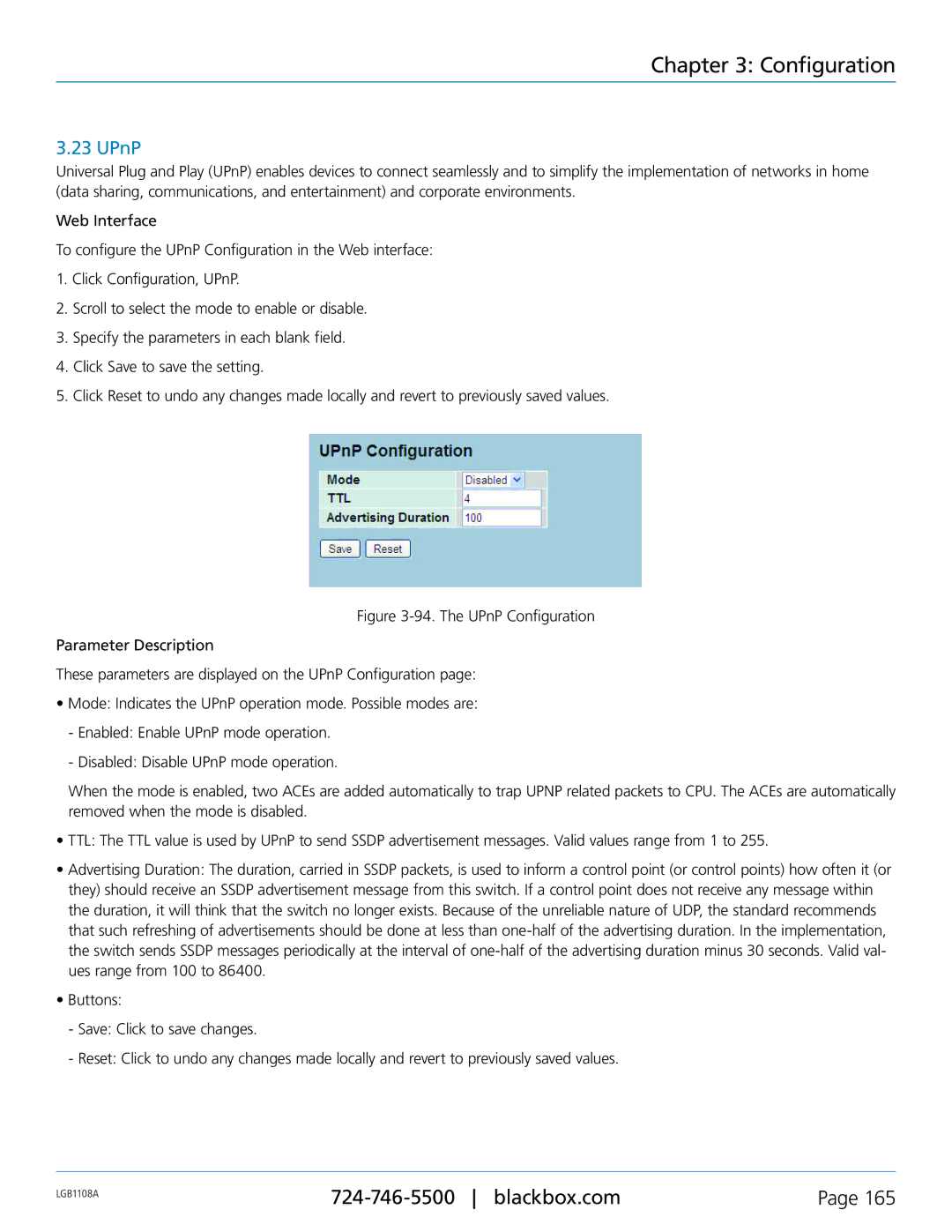
Chapter 3: Configuration
3.23 UPnP
Universal Plug and Play (UPnP) enables devices to connect seamlessly and to simplify the implementation of networks in home (data sharing, communications, and entertainment) and corporate environments.
Web Interface
To configure the UPnP Configuration in the Web interface:
1.Click Configuration, UPnP.
2.Scroll to select the mode to enable or disable.
3.Specify the parameters in each blank field.
4.Click Save to save the setting.
5.Click Reset to undo any changes made locally and revert to previously saved values.
Figure 3-94. The UPnP Configuration
Parameter Description
These parameters are displayed on the UPnP Configuration page:
•Mode: Indicates the UPnP operation mode. Possible modes are:
-Enabled: Enable UPnP mode operation.
-Disabled: Disable UPnP mode operation.
When the mode is enabled, two ACEs are added automatically to trap UPNP related packets to CPU. The ACEs are automatically removed when the mode is disabled.
•TTL: The TTL value is used by UPnP to send SSDP advertisement messages. Valid values range from 1 to 255.
•Advertising Duration: The duration, carried in SSDP packets, is used to inform a control point (or control points) how often it (or they) should receive an SSDP advertisement message from this switch. If a control point does not receive any message within the duration, it will think that the switch no longer exists. Because of the unreliable nature of UDP, the standard recommends that such refreshing of advertisements should be done at less than one-half of the advertising duration. In the implementation, the switch sends SSDP messages periodically at the interval of one-half of the advertising duration minus 30 seconds. Valid val- ues range from 100 to 86400.
•Buttons:
-Save: Click to save changes.
-Reset: Click to undo any changes made locally and revert to previously saved values.
LGB1108A | Page 165 | |
|
|
